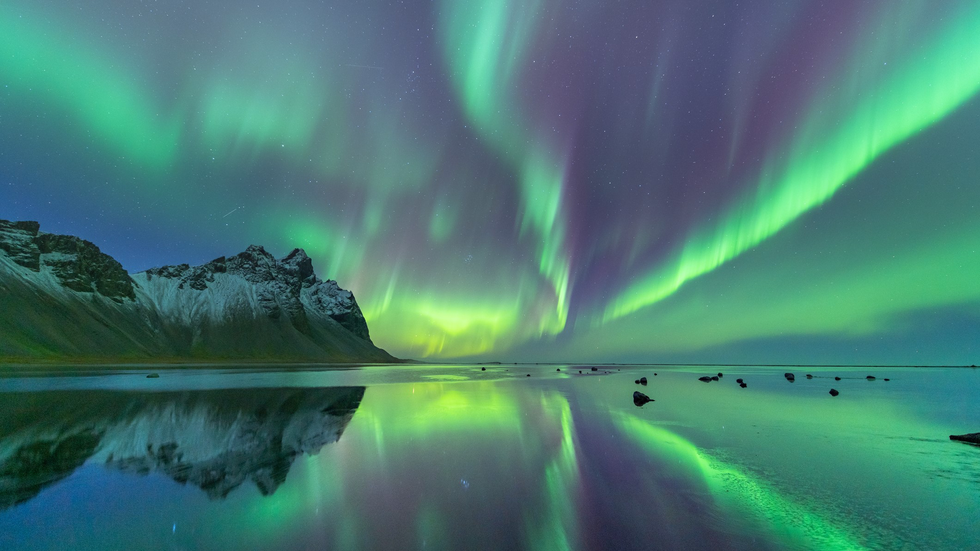What are Auroras?
- An aurora is a natural light display in Earth's sky, predominantly seen in high-latitude regions (around the Arctic and Antarctic).
- Auroras are caused by the interaction of energetic particles (electrons and protons) of the solar wind with atoms of the upper atmosphere.
- Auroras display dynamic patterns of brilliant lights that appear as curtains, rays, spirals, or dynamic flickers covering the entire sky.
- They are also commonly known as the northern lights (aurora borealis) or southern lights (aurora australis).
What is the Aurora Borealis?
- Often called the Northern Lights, it occurs in the northern hemisphere, predominantly in regions near the Arctic Circle.
- This includes countries like Norway, Sweden, Finland, Iceland, Canada, and Alaska.
- The northern lights result from charged particles from the sun, mainly electrons and protons, colliding with the Earth’s magnetosphere and interacting with gases in the Earth’s atmosphere.
- These collisions produce colourful displays of light, primarily in green, red and purple hues.
- The bright colors of the northern lights are dictated by the chemical composition of Earth's atmosphere.
